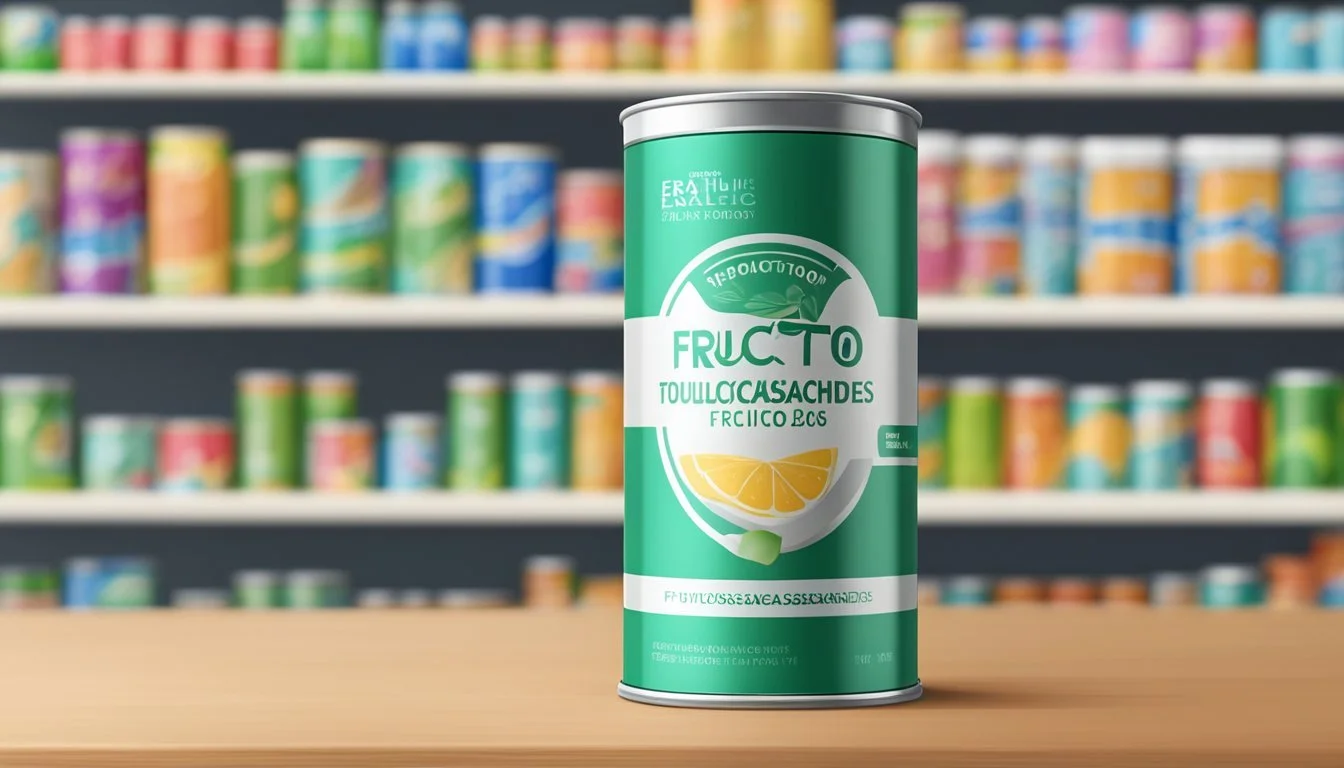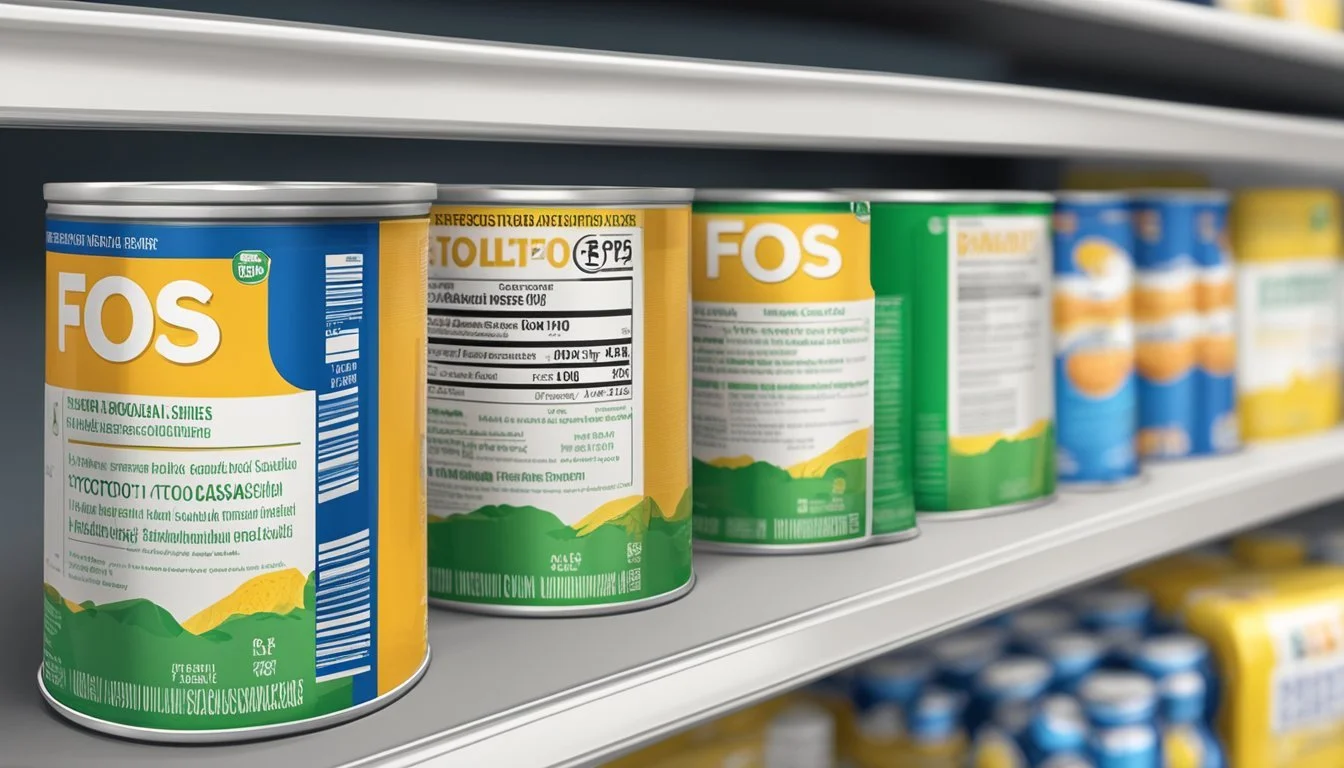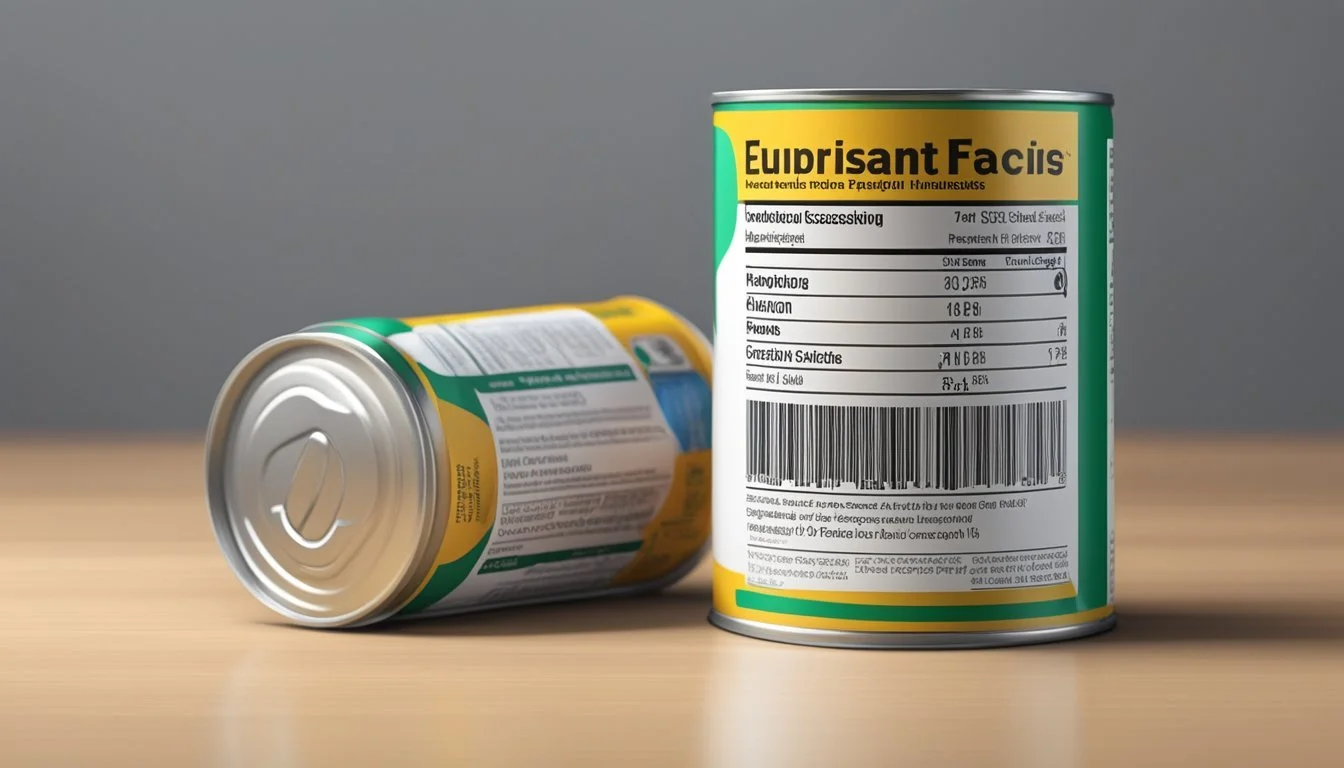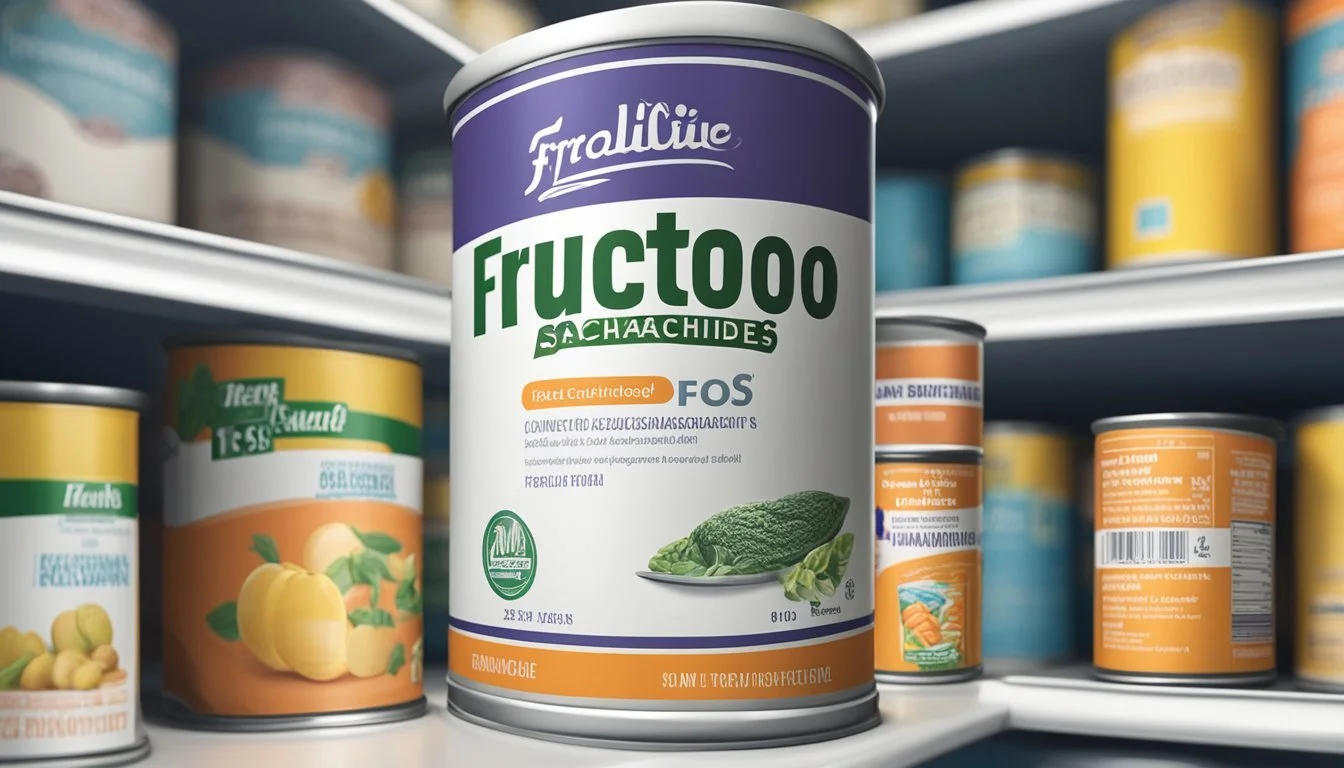How Long Does Canned Fructooligosaccharides (FOS) Last?
Shelf Life Explained
Fructooligosaccharides (FOS) are a type of carbohydrate and dietary fiber commonly found in a variety of plants, fruits, and vegetables. As a dietary supplement or food additive, it often comes in powdered or liquid form, but can also be found canned, which might be used, for example, as a sweetener. The shelf life of canned FOS, much like other preserved foods, depends on the conditions of storage and the method of preservation used. Proper storage conditions include keeping the cans in a cool, dry place away from direct sunlight to ensure the FOS retains its quality and beneficial properties for its recommended shelf life.
The stability of FOS in canned form allows it to be stored for an extended period. Typically, the expiration date provided by manufacturers acts as a guideline for its potential shelf life. Even though it is a carbohydrate, FOS is not easily broken down by human digestive enzymes. This resistance to digestion means that canned FOS used for its prebiotic effects will likely maintain its dietary benefits up until the expiration date if stored correctly.
When incorporating canned FOS into one's diet as a source of fiber or for its prebiotic effects, understanding its proper storage and longevity is important. Consumers should pay attention to the expiration dates on the can and adhere to optimal storage practices. If the canned FOS exhibits signs of spoilage or an off odor, it should be discarded regardless of the expiration date.
FOS Basics
Fructooligosaccharides (FOS) are a specific type of carbohydrate that offers various health benefits due to their non-digestible nature. This section will break down their definition, structure, and natural sources.
Definition and Structure
Fructooligosaccharides (FOS) are a class of oligosaccharides, which are carbohydrates made up of short chains of fructose molecules. Structurally, they consist of a glucose molecule at one end and multiple fructose units connected by bonds that human digestive enzymes cannot break down. Their resistive nature to digestion allows them to reach the colon intact, where they serve as prebiotics, stimulating beneficial bacterial growth.
Sources of FOS
FOS are found naturally in a variety of foods. Some common dietary sources of FOS include:
Onion
Garlic
Asparagus
Chicory Root
Jerusalem Artichoke
Bananas
These foods contain FOS in varying amounts, with chicory root being particularly high in content. Other notable sources include yacon root and blue agave. FOS extracted from these sources can be processed and preserved in canned form, often used as a dietary fiber supplement and a prebiotic to promote gut health.
Health Benefits of FOS
Fructooligosaccharides (FOS) are associated with a variety of health benefits, particularly in promoting digestive health and modulating the gut microbiome. They also have a role in managing certain health-related conditions by affecting the gut bacteria and various metabolic processes.
Gut Microbiome Enhancement
FOS primarily serves as a prebiotic, stimulating the growth and activity of beneficial bacteria in the gut, such as Lactobacillus and Bifidobacterium. The consumption of FOS can:
Enhance the production of short-chain fatty acids which are crucial for gut health.
Help maintain a balanced gut microbiome, potentially reducing issues like constipation.
By boosting these beneficial bacteria, FOS contributes to a stronger gastrointestinal tract and supports the overall health of the gut microbiome.
Management of Specific Health Conditions
Regular intake of FOS may have several potential benefits for managing health conditions:
Obesity and Diabetes: FOS can influence the metabolism, possibly aiding in the reduction of obesity. It may also help in controlling blood sugar levels for those with diabetes.
Cholesterol: Preliminary research indicates that FOS may have a positive effect on blood lipid profiles, potentially helping to lower cholesterol levels.
Immune System: By modifying gut bacteria, FOS may contribute to a reduction in systemic inflammation and enhance immune function.
In supporting the growth of bifidobacteria and other positive gut flora, FOS indirectly supports various aspects of digestive and metabolic health.
Shelf Life of Canned FOS
Canned fructooligosaccharides (FOS) maintain quality over an extended period when stored properly. Their longevity is significantly affected by storage conditions and adherence to expiration dates.
Storage Conditions
Storage environment plays a critical role in the shelf life of canned FOS.
Temperature: It should be kept in a cool, dry place, ideally at constant temperatures between 50°F to 70°F (10°C to 21°C).
Humidity: Low humidity prevents can corrosion and subsequent contamination.
Light: A dark environment avoids the degradation of the product's quality.
Expiration and Safety
Canned FOS is marked with an expiration date that indicates the manufacturer's estimate for peak quality.
Shelf Life: While specific data on FOS is limited, it may be akin to low-acid canned goods, which typically last between 2 to 5 years.
Safety: Cans should be inspected before use; any sign of damage, such as bulging, leaks, or rust, can compromise safety.
Consumers should always err on the side of caution and dispose of canned goods that show any sign of spoilage, regardless of the age of the product.
Usage in Diet
Fructooligosaccharides (FOS) serve as a sweetener and prebiotic in various dietary contexts. They are often incorporated for their non-caloric properties and potential health benefits.
Integrating FOS into Meals
Incorporating FOS into an individual's diet typically involves using it as an alternative to traditional sugars. FOS can be found in a variety of processed foods, such as cereals and baked goods, due to its sweetening ability. Additionally, some vegetables and fruits naturally contain FOS, including bananas, onions, garlic, and asparagus. Consumers may also use FOS syrups and powders to sweeten beverages and foods at home, making it a versatile ingredient in the kitchen.
Common sources of dietary FOS:
Processed foods (cereals, bars)
Vegetables (asparagus, garlic)
Fruits (bananas)
Syrups and powders (used as a sweetener)
Daily Recommended Intake
There is no established recommended daily intake for FOS. However, when using FOS as a nutritional supplement or sweetener, it is important to adhere to usage guidelines on product labels. Typically, a supplementary intake ranging from 5 to 10 grams per day has been suggested for gastrointestinal benefits. It's crucial to monitor one's body's response to FOS, as excessive consumption can lead to digestive discomfort such as bloating and gas.
Suggested FOS Supplement Dosage:
Starting dose: 3-5 grams per day
Maintenance dose: 5-10 grams per day
Threshold for side effects: >10 grams per day (may cause digestive discomfort)
When integrating FOS into a diet, individuals should consider their overall dietary fiber intake and the inclusion of various prebiotic and fiber-rich foods to ensure a balanced approach to gut health.
Potential Side Effects
While fructooligosaccharides (FOS) are considered safe for consumption, they may lead to certain side effects, especially when consumed in large quantities. Here is an overview of how they may affect the digestive system and interact with certain health conditions.
Digestive Discomfort
FOS, a type of carbohydrate, can cause uncomfortable digestive symptoms. These side effects include:
Bloating: The ingestion of FOS can lead to an increase in gas production, resulting in a feeling of fullness or swelling in the abdominal area.
Diarrhea: High doses of FOS may lead to loose stools or diarrhea as the body adapts to the increased carbohydrate content.
Gas: The fermentation of FOS in the large intestine can cause excessive gas and flatulence.
Cramps: Some individuals might experience stomach cramps or pain after consuming FOS.
Sensitive individuals, such as those with irritable bowel syndrome (IBS), may be more prone to these symptoms.
Interactions with Health Conditions
There can be specific interactions between FOS and certain health conditions that one should be aware of:
Bifidobacterium spp. and Lactobacillus spp.: FOS can promote the growth of these beneficial bacteria; however, the resulting changes in microbiota may affect individuals differently, potentially aggravating symptoms in those with health conditions like ulcerative colitis.
Type 2 Diabetes: Attention to FOS intake is important as it could impact blood sugar levels.
Weight Gain: While FOS itself is not directly associated with weight gain, digestive discomfort may influence overall eating patterns and appetite.
Cholesterol Levels: FOS might impact cholesterol levels; however, more research is needed to understand this potential effect fully.
Understanding Prebiotics
Prebiotics are specialized plant fibers that beneficially nourish the good bacteria present in the gut microbiota. These compounds, often oligosaccharides, are indigestible by human enzymes and serve as substrates for fermentation by gut bacteria.
FOS as a Prebiotic
Fructooligosaccharides (FOS) are a class of oligosaccharides that are recognized as prebiotics. Derived from plant sources, FOS predominantly consists of glucose and fructose sugar molecules. It's indigestible by humans but readily fermented by beneficial bacteria in the gut. The fermentation of FOS proceeds in the colon, where it fosters an environment conducive to the growth of good bacteria such as Bifidobacteria. This process leads to the production of short-chain fatty acids (SCFAs), which have several health benefits, including supporting colon health and enhancing mineral absorption.
Key Aspects:
Indigestibility: FOS withstand consumption without being broken down by human digestive enzymes.
Fermentation: FOS is fermented by gut microbiota, specifically good bacteria.
Benefits: Stimulates the growth of beneficial bacteria and SCFA production.
Relation with Probiotics
Probiotics are live microorganisms that, when administered in adequate amounts, confer a health benefit on the host. FOS and other prebiotics are particularly important for probiotics because they act as food for these beneficial microorganisms. By consuming prebiotics, the diversity and number of probiotics in the gut microbiota can increase. This symbiotic relationship ensures a better balance of gut flora and supports a healthy digestive system. In vitro studies have been pivotal in understanding how prebiotics, including FOS, selectively promote the growth of good bacteria over harmful ones.
Connection Summary:
Probiotics: Live beneficial bacteria that are advantageous to human health.
Synergy: Prebiotics like FOS support probiotics by serving as their food source.
In vitro Research: Studies outside of living organisms that help to ascertain the specific ways prebiotics aid probiotics.
Recent Studies and Trials
Recent research on fructooligosaccharides (FOS) offers rigorous scientific evidence on their shelf life and efficacy. Key findings from randomized controlled trials and meta-analyses provide a clear understanding of how FOS behaves when contained in canned products.
Controlled Trials Findings
In controlled trials, researchers assess the stability and impact of FOS under strict experimental conditions. Bouhnik et al. conducted a prominent trial where they monitored the viability of bifidobacteria in supplements containing FOS. Their results indicated that during FOS intake, bifidobacterial concentrations reached high levels, implying that FOS remains active for a considerable period in canned form. The trial notes that these effects subside and return to initial values within a 12-day period post-intervention, suggesting a limited time frame for optimal efficacy when consumed.
Meta-Analysis of FOS Research
A meta-analysis compiles data across multiple studies to provide a comprehensive look at a compound's properties. The aggregated scientific evidence through meta-analyses reveals that FOS can reliably increase good bacteria levels in the gut. However, results highlight variability in the extent of this effect dependent on dosage and individual microbiota composition. As far as shelf life goes, the consensus is that FOS maintains its prebiotic qualities over extended periods, so long as the product is stored correctly and unopened. The consistent increase in beneficial short-chain fatty acid production is a key indicator that the FOS retains functionality while canned.
Regulatory Perspective
Fructooligosaccharides (FOS) packaged in canned goods must adhere to strict regulatory guidelines, which govern their labeling standards and health claims. These regulations ensure consumer safety and provide accurate information.
Labeling Standards
Regulatory agencies require comprehensive labeling to inform consumers about the contents of food products such as canned FOS. Labels must clearly state the presence of FOS and its amount. For instance, they must specify ingredients in descending order of predominance. Labels must also include an expiration or best before date, which guides consumers on the shelf life of the product. Companies packaging FOS are required to follow the Federal Food, Drug, and Cosmetic Act (FD&C Act) to ensure that the labels meet the legal standards for food safety and consumer protection.
Health Claim Regulations
Health claims on food products, including those containing FOS, are closely regulated. Any claim made must be backed by scientific evidence and approved by authorities such as the US Food and Drug Administration (FDA). Fructooligosaccharides have been recognized as "Generally Recognized as Safe" (GRAS), allowing for certain health-related claims. However, claims must not be misleading and should reflect the interactions and benefits of FOS without overstatement. The health claim regulations ensure that all statements are substantiated, maintaining high safety standards and fostering trust with consumers.
Conclusion
When discussing the shelf life of canned fructooligosaccharides (FOS), several key aspects should be considered for clarity and comprehensiveness.
Shelf Life: Canned FOS typically have a prolonged shelf life due to the canning process that inhibits microbial growth. The product may remain stable and usable for two years or more when stored in a cool, dry place. However, once opened, the product's shelf life diminishes and it should be consumed within a specified time frame mentioned on the label.
Storage Conditions: Optimal storage conditions include:
Temperature: Room temperature or cooler
Environment: Dry and away from direct sunlight
Quality Indicators: Users should inspect the can for:
Dents or rust
Swelling or leaks
"Best by" or expiration date
Key Takeaways:
Unopened canned FOS have a long shelf life due to canning technology.
Proper storage is essential to maintaining product integrity.
Always adhere to label instructions for both storage and usage.
In summary, provided it remains unopened and is stored properly, canned FOS can be expected to retain their quality for an extensive period. Consumers should always inspect the packaging for potential quality issues and strictly follow the "best by" dates for optimal safety and efficacy.











